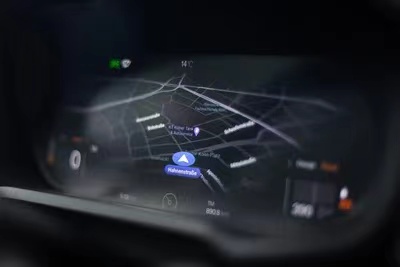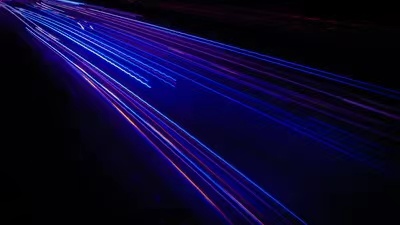创新背景
这项新研究建立在约翰·奥基夫教授(伦敦大学学院细胞与发育生物学)开创性工作的基础上,他因发现位置细胞而获得2014年的诺贝尔奖。这些细胞存在于一个叫做海马体的大脑区域,只有当动物进入环境中的特定位置时,它们才会活跃起来。
创新过程
这项发表在《细胞》杂志上的研究解释了研究人员如何利用“全光学”方法,使用双激光同时读取和写入小鼠的“位置细胞”(一种神经元)的活动,当它们在虚拟现实环境中导航时。值得注意的是,通过刺激位置细胞,科学家能够重新激活(或检索)老鼠获得奖励的位置的记忆,这反过来“精神传送”老鼠,使它们的行为就像在奖励的地方一样。
位置细胞被认为代表了环境的认知地图——就像内部的GPS——并保留位置记忆。伦敦大学学院的这项新研究首次直接表明,位置细胞活动是大脑导航能力的基础。

第一作者尼克·罗宾逊博士(伦敦大学学院沃尔夫森生物医学研究所)说:“这些结果提供了直接的因果证据,证明老鼠使用由地方细胞活动所代表的信息来指导它们的行为。”换句话说,位置细胞真的会告诉老鼠它在哪里,而老鼠在做决定的时候实际上会“听”它们的位置细胞。这为记忆如何储存在大脑中提供了新的见解,也为操纵这些记忆来影响行为提供了新的工具。”他补充说:“记忆障碍——比如痴呆和阿尔茨海默症——给社会带来了巨大的代价。这项工作可能最终导致对这些疾病的更好理解,以及治疗干预的新靶点。”
伦敦大学学院沃尔夫森生物医学研究所的研究人员利用了一种强大的方法,结合了两种革命性的技术,利用光来读取和写入大脑中的电活动。

伦敦大学学院的科学家们利用这种方法,对漫游到虚拟世界中特定位置以收集糖水奖励的老鼠的海马体中的位置细胞进行了定向激活。他们首先用光学方法记录了大量海马位置细胞的活动,识别出那些在奖励位置特别活跃的细胞,从而形成对该位置的记忆基础。然后,他们使用全息定向激光束激活虚拟世界中不同位置的这些特定位置细胞。
值得注意的是,位置细胞的刺激足以恢复对奖赏位置的记忆,导致老鼠在新的位置寻求奖赏。换句话说,光对神经元的刺激“在精神上传送”了动物,使它们的行为就像它们在奖励的地方一样。这是第一次展示了位置细胞的激活如何使我们能够检索我们所处环境的记忆,并帮助我们导航。
创新价值
研究表明我们可以利用特定神经元的光学读写活动来操纵记忆,让我们更好地理解——并有可能改善——神经回路活动如何帮助我们做决定,未来或许可以帮助我们开发出治疗痴呆症和阿尔茨海默病等影响记忆的疾病的新疗法。
创新关键点
首先,他们设计神经元表达基因编码的钙传感器,这使细胞在活跃时发光。其次,他们在相同的神经元中表达了光敏“光遗传”蛋白,允许它们用激光光束激活特定的细胞,使用数字全息术(与激光秀中使用的技术相同)定位。通过结合这两种技术,团队可以记录和操纵老鼠在虚拟现实中导航时大脑中相同神经元的活动。
创新主体
伦敦大学学院(University College London,简称:UCL ),1826年创立于英国伦敦,是一所公立研究型大学,为伦敦大学联盟的创校学院、罗素大学集团和欧洲研究型大学联盟创始成员,被誉为金三角名校和“G5超级精英大学”之一。
UCL是伦敦的第一所大学,以其多元的学科设置著称,于REF 2014 英国大学官方排名中,位列全英之冠,享有最多的科研经费。UCL的医学、解剖学和生理学、建筑学、教育学、考古学、计算机科学、计算金融学等学科排名均位居世界前列,与LSE并称为“英国现代经济学研究的双子星”;其人文学院颁发的奥威尔奖则是政治写作界的最高荣誉。
Using light to reprogramme the brain’s GPS
The study, published in the journal Cell, explains how the researchers took advantage of an "all-optical" approach, using dual lasers to simultaneously read and write the activity of "place cells" - a type of neuron - in mice as they navigated through a virtual reality environment. Remarkably, by stimulating place cells, the scientists were able to reactivate (or retrieve) the memory of the place where the rat received the reward, which in turn "teleports" the rat, causing them to behave as if they were at the place of the reward.
Place cells are thought to represent a cognitive map of the environment -- like an internal GPS -- and retain location memories. The new UCL study is the first to directly show that place cell activity underlies the brain's ability to navigate.
"These results provide direct causal evidence that mice use information represented by local cellular activity to guide their behaviour," said lead author Dr Nick Robinson (Wolfson Institute for Biomedical Research, UCL). In other words, the place cell really tells the mouse where it is, and the mouse actually "listens" to their place cell when making a decision. This provides new insights into how memories are stored in the brain, as well as new tools for manipulating those memories to influence behavior." He added: "Memory disorders - such as dementia and Alzheimer's - come at a significant cost to society. This work may ultimately lead to a better understanding of these diseases and new targets for therapeutic intervention."
Researchers at the Wolfson Institute for Biomedical Research at University College London have taken advantage of a powerful approach that combines two revolutionary technologies that use light to read and write electrical activity in the brain.
Scientists at University College London used this approach to target the activation of place cells in the hippocampus of mice that wandered to specific locations in the virtual world to collect sugar water rewards. They first optically recorded the activity of a large number of hippocampal place cells, identifying those that were particularly active at the reward site and thus forming the basis of memory for that location. They then used holographic directed laser beams to activate these site-specific cells at different locations in the virtual world.
Remarkably, the stimulation of place cells was sufficient to restore the memory of the reward location, leading the mice to seek the reward in the new location. In other words, the stimulation of neurons by light "mentally teleport" the animals, causing them to behave as if they were at the site of the reward. This is the first demonstration of how activation of place cells enables us to retrieve memories of our environment and help us navigate.
智能推荐
行为神经科学创新思维 | 创新探究人们在纸上书写时的大脑活动和记忆能力
2022-11-17利用磁共振成像(MRI)扫描仪在对比实验中调查研究纸张记录对于人们学习记忆的用处和优势。
涉及学科涉及领域研究方向